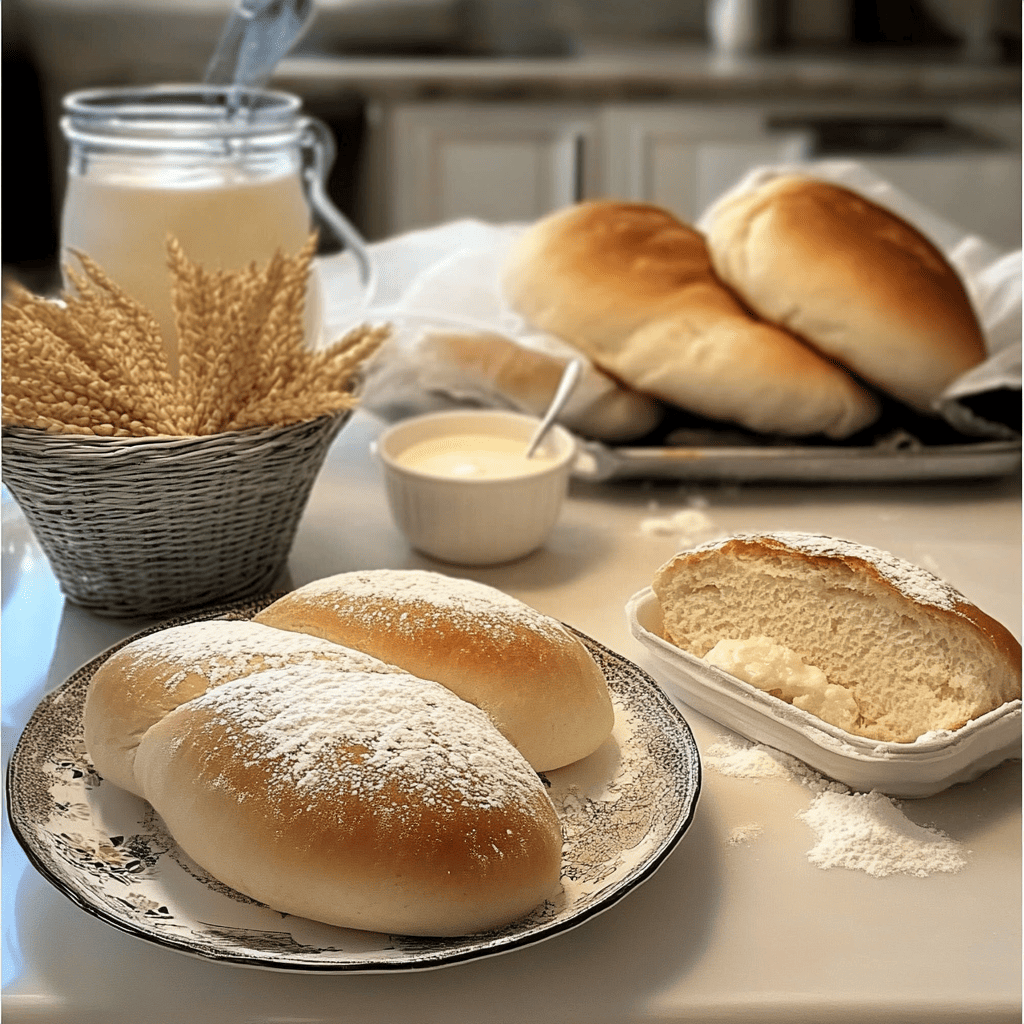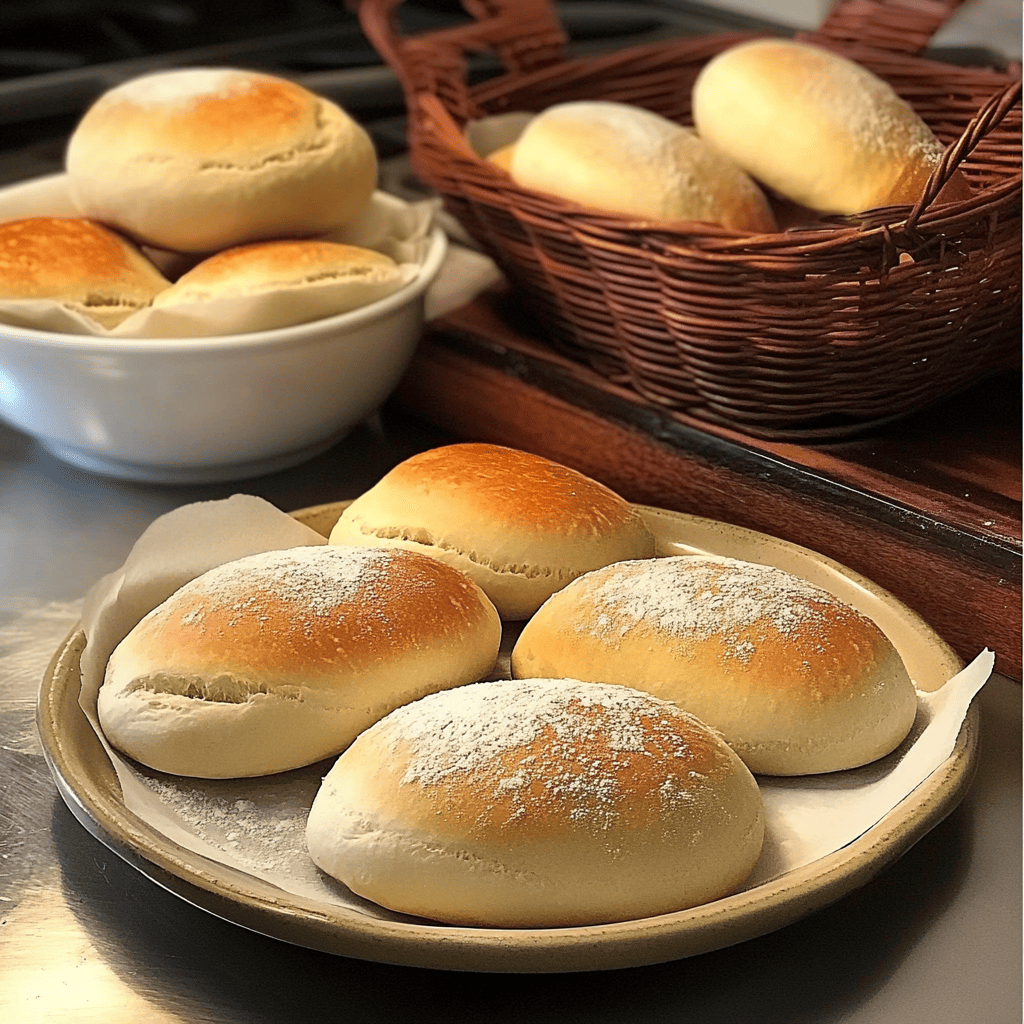The bolillo
Introduction
The bolillo is one of the most representative breads of Mexican cuisine. Its presence in the daily diet of millions of people makes it an essential part of the country’s culture. Although its origin is linked to the influence of French baking, this bread has evolved over time to become a symbol of Mexican culinary identity. Its versatility makes it ideal for accompanying a variety of traditional dishes, from simple breakfasts with butter and jam to the famous Mexican tortas.
In this article, we’ll explore the history of the bolillo in detail, its evolution over time, its variations, and its impact on Mexican culture. We’ll also answer some key questions about its preparation, its differences with other types of bread, and its importance in the Mexican diet.

History of the Bolillo
The bolillo is a type of crispy, spongy bread, very popular in Mexico and other Latin American countries. Its history is closely linked to the influence of European bread on Mexican cuisine, especially after the arrival of the Spanish in the 16th century.
French origin and influence
Although bread already existed in Mexico before the Spanish conquest, the arrival of wheat with European colonizers transformed local baking. However, the bolillo, as we know it today, is strongly influenced by 19th-century French baking. During the Second Mexican Empire (1864–1867) , under the reign of Maximilian of Habsburg, French bakers arrived and introduced European techniques and recipes. The bolillo is believed to be a Mexican adaptation of the French baguette , but in a smaller version and with a thinner crust.
Expansion and popularity
The bolillo quickly became a staple food in Mexico, as it was affordable, easy to produce, and paired well with many traditional dishes. It became popular in bakeries and markets, and today it is one of the most consumed breads in the country. Its versatility makes it ideal for pairing with dishes such as:
- Mexican tortas (sandwiches with different fillings).
- Molletes (bread with beans and melted cheese).
- Chilaquiles with bolillo (a variant in some regions).
- Pambazos (bread soaked in guajillo sauce and filled with potato and chorizo).
Regional variants
Throughout Mexico, the bolillo has developed several variations depending on the region. Some of the best known are:
- Telera : Similar to the bolillo, but wider and with two cuts at the top.
- Birote : A denser version with a slightly acidic flavor, typical of Guadalajara.
- French or French bread : In some states, this is what bolillo is called.
The bolillo in popular culture
The bolillo is not only a staple of the Mexican diet, but it has also entered popular culture. A common saying in Mexico is “Buy yourself a bolillo for the fright!” , referring to the belief that eating bread helps calm the nerves after a shock.
Today, the bolillo remains a symbol of Mexican baking and an indispensable element on many families’ tables. Its history reflects the fusion of cultures and the evolution of Mexican cuisine over time.

Ingredients:
- 2 cups of flour
- 1 teaspoon of salt
- 1/4 cup sugar
- 1/2 cup warm milk
- 1 teaspoon of dry yeast
- 1 teaspoon melted butter
Preparation:
Activate the yeast:
In a small bowl, mix the dry yeast with the warm milk and a teaspoon of sugar. Let it sit for 10 minutes until the mixture bubbles, indicating the yeast is active.
Prepare the dough:
In a large bowl, mix the flour, salt, and remaining sugar. Then, add the activated yeast and melted butter.
Knead:
Knead the mixture for about 10-15 minutes until you have a soft, elastic dough. If it’s too sticky, add a little more flour, but don’t overdo it so the bread doesn’t become dry.
Let it rest:
Place the dough in a lightly greased bowl, cover it with a clean cloth, and let it rest in a warm place for about 1 hour, or until it doubles in size.
Form the rolls:
After resting, divide the dough into equal portions and shape them into ovals. Place them on a baking sheet lined with parchment paper.
Second rest:
Cover the rolls with a cloth and let them rest again for 30-40 minutes.
Bake:
Preheat oven to 180°C (350°F). Dust the bolillos with flour and score the tops with a sharp knife. Bake for 15-20 minutes or until golden brown.
Cool and enjoy:
Remove the bolillos from the oven and let them cool on a wire rack before serving.
Ready! Now you can enjoy homemade bolillo bread, perfect to accompany with butter, jam, or any filling of your choice.
Frequently asked questions about bolillo
What is the origin of the bolillo?
The bolillo has roots in 19th-century French bakery, specifically the baguette, but with adaptations to suit the tastes and needs of the Mexican population.
What is the difference between bolillo and telera?
The telera is wider, softer, and has two cuts on the top, while the bolillo is longer and has a slightly crispier crust.
How do you make a traditional bolillo?
Bolillos are made with basic ingredients such as flour, water, salt, yeast, and sometimes butter or sugar. The dough is kneaded, left to rise, shaped, and finally baked at a high temperature to achieve its characteristic texture.
What are the main variations of bolillo in Mexico?
Some variants include the birote , which is denser and with a touch of acid (very popular in Jalisco), and the telera , which is commonly used to prepare tortas.
Why do they say “Buy yourself a bun for the scare”?
This popular saying refers to the belief that eating bread helps calm the nerves after a terrifying experience or a sudden scare.
Texture and flavor:
- Exterior texture: Crispy and golden thanks to direct baking.
- Interior: Soft, spongy and slightly moist.
- Flavor: Neutral, with a slightly salty note. Its simple flavor makes it a very versatile bread, ideal for both savory and sweet dishes.
Consumption context:
- In Mexico and Central America , the bolillo is a basic everyday bread.
- It is eaten for breakfast , accompanied by butter, jam or coffee.
- At lunchtime or dinner, it’s a staple in tortas (Mexican sandwiches), molletes (with beans and cheese), or simply as an accompaniment to brothy dishes like pozole or birria.
- In many regions, the bolillo is also used to prepare migajas , pambazos , and breaded stuffed chiles .
Visual appearance:
- Oval shape and slightly pointed at the ends.
- Longitudinal cut at the top that opens slightly when baked.
- Uniform golden color on the outside, with a well-cooked crust.
- The interior is white or slightly yellowish, depending on the type of flour.
Curiosities:
- Although many associate it only with Mexico, its origin is European (inspired by French bread).
- In Guadalajara it is called “birote,” and there is a version fermented with a more acidic sourdough starter .
- In some towns, the bolillo is left to dry to be used in traditional recipes such as “bread pudding” or “capirotada.”
- It is baked twice a day in many traditional bakeries: at dawn and in the afternoon , so that it is always fresh.
Estimated nutritional value per serving (1 medium roll, 65 g):
- Calories: 180 kcal
- Carbohydrates: 35 g
- Protein: 5 g
- Fat: 1 g
- Fiber: 1.5 g
- Sodium: 320 mg
- Sugars: 0 g
More information about the bolillo
Importance in Mexican gastronomy
The bolillo is a staple in the Mexican diet due to its affordability, neutral flavor, and versatility. It’s an ideal complement to dishes like molletes , chilaquiles , tortas , and pambazos .
Manufacturing process
The bolillo-making process has remained almost unchanged since its introduction to Mexico. The combination of yeast, flour, and water, along with a high-temperature baking process, gives it its distinctive crispy texture on the outside and fluffy on the inside.
The bolillo in popular culture
In addition to its importance in the diet, the bolillo is a staple of popular sayings and beliefs. In many Mexican families, it’s common to eat it as part of breakfast or dinner, accompanied by coffee, milk, or hot chocolate.

Conclusion
The bolillo is much more than a simple bread; it’s an iconic element of Mexican culture and cuisine. Its history, influenced by French baking, has resulted in an accessible and versatile food that has become a staple in homes and restaurants across the country. Its popularity continues to grow, and its regional variations make it even more special.
Beyond its flavor and texture, the bolillo has a cultural significance that links it to Mexican identity. Whether as a side dish or as the centerpiece of a well-prepared torta, the bolillo will remain a part of everyday life in Mexico for many generations to come.

